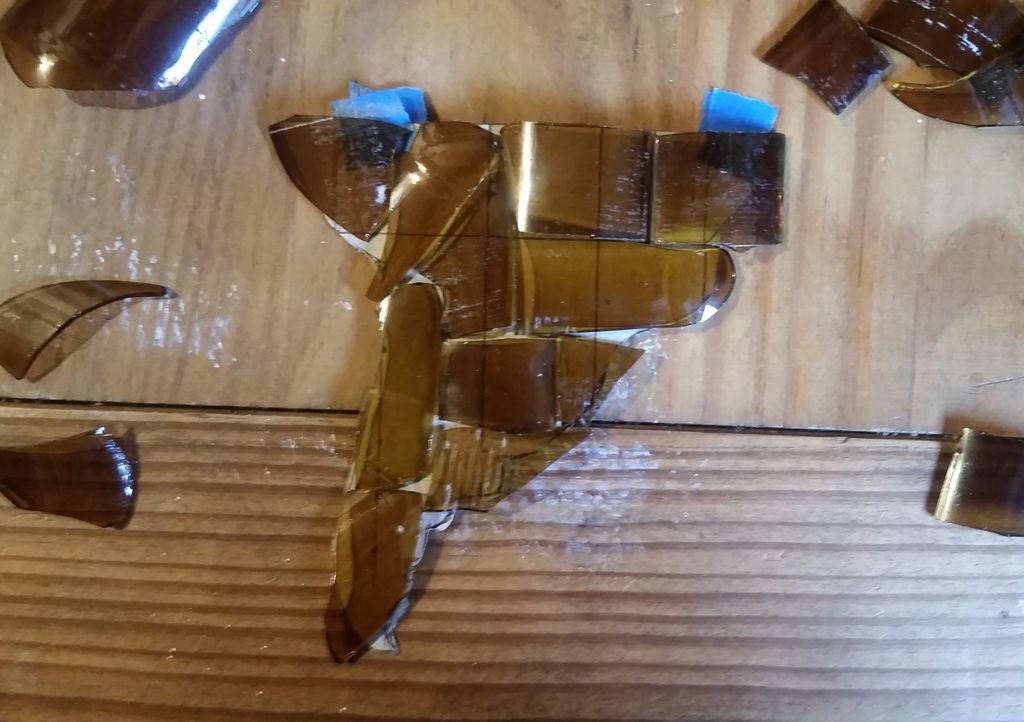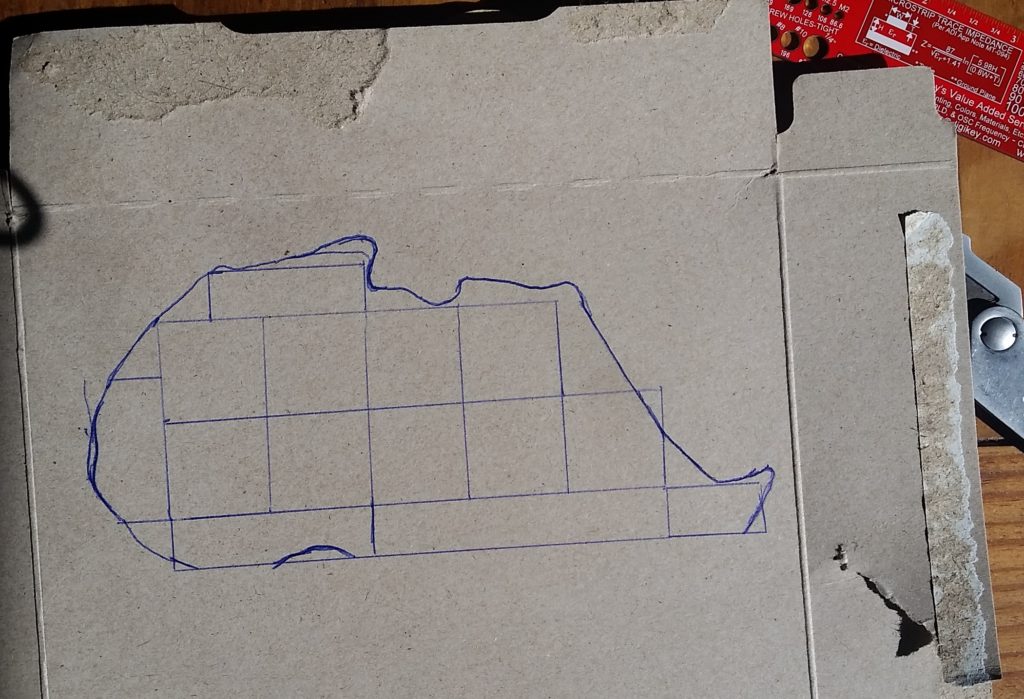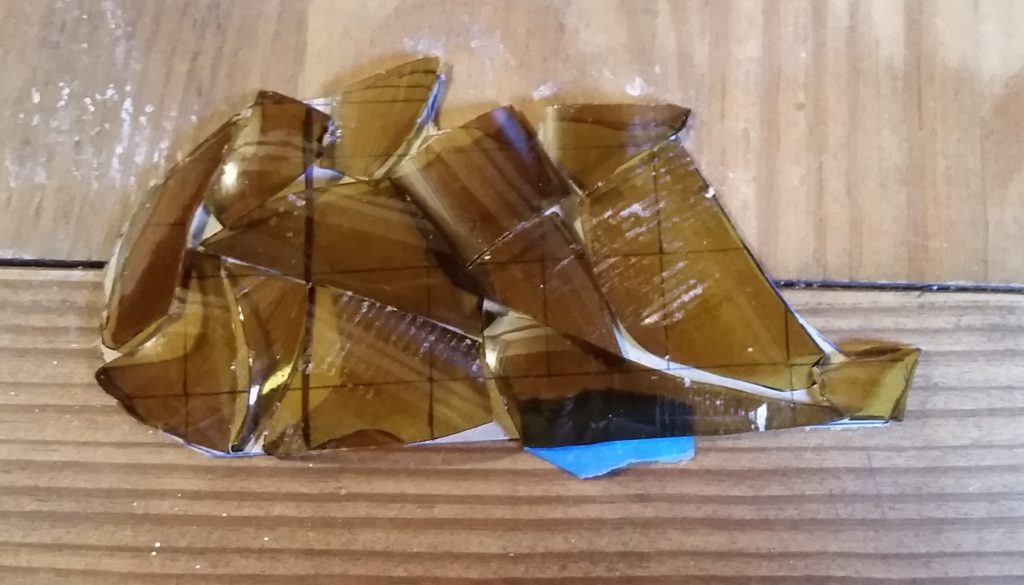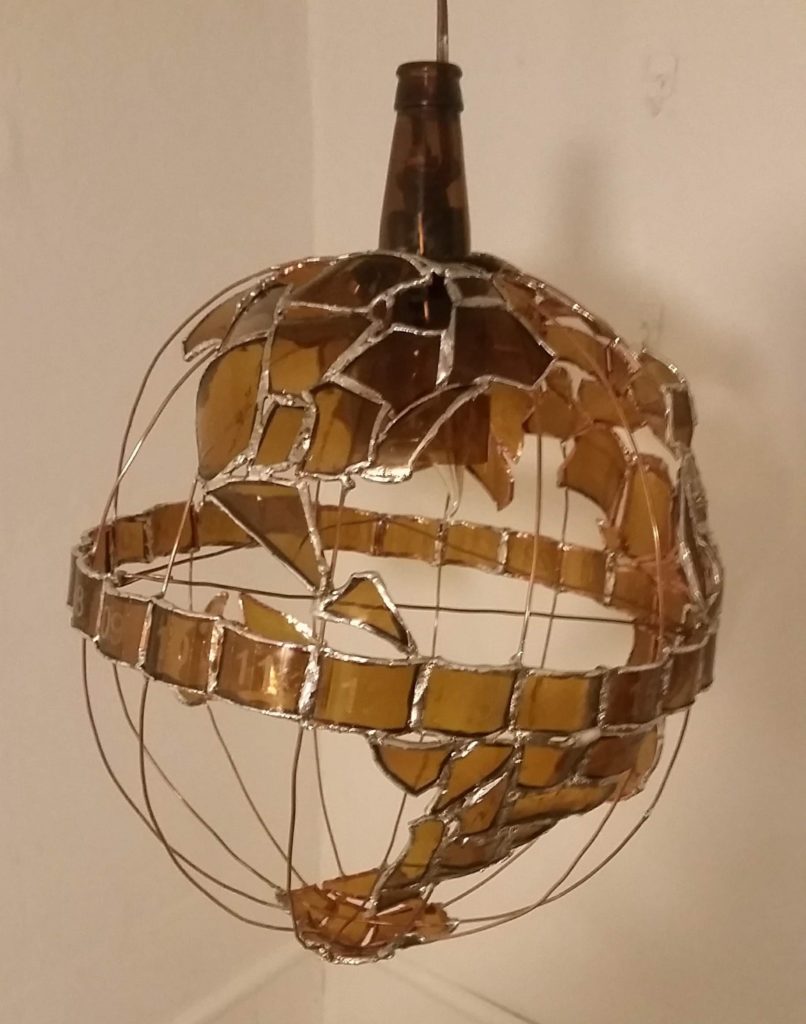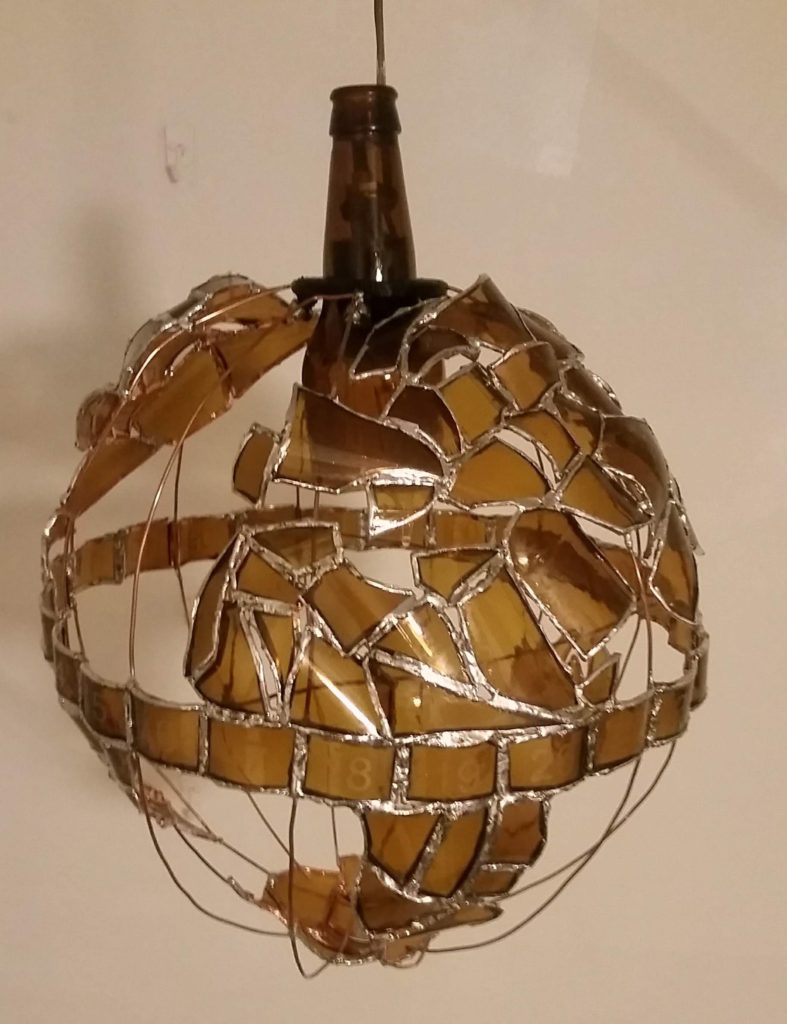For my final project, my goal was to make a creative light art sculpture like nothing I had seen before. I’ve worked with stained glass in previous projects, and I’ve always liked the look, material, and durability of it. It is also a great technique for a light art project, because the glass can project different shapes and colors on nearby surfaces. After some experimenting, I settled on a globe design made of glass recycling. The globe features the 7 continents and the equator on a copper wire-frame sphere.

Constructing the globe was no easy process. The project features 106 glass pieces that all had to fit together properly to make a sphere. I started the process by designing the equator for the globe. These are the few pieces on the globe that were specifically cut to size. There are 24 rectangular pieces along the 11″ diameter equator, each of which were laser-etched from 0 to 23. In the future I’ll use these pieces as a clock face, but they don’t serve any other purpose at the moment. Copper wire was used to make two perpendicular loops to create the frame for the sphere.

I created each of the continents with a variety of techniques. First, I used Google Earth to transfer a scale model of the continents on to cardboard. Then I was able to cut and bend the cardboard into the right size and shape. The continents are mostly made of broken glass pieces, that just so happened to fit into place together. Some of the broken pieces were cut once to allow them to fit better, but the majority of the pieces are simply randomly shaped broken glass pieces. For constructing most continents, I matched glass pieces to the cardboard cutouts and soldered the continent together before attaching the full thing to the globe. For other continents like Asia, which was very challenging due to it’s size and curvature, I had to find the pieces one by one and build it in place, which is why it has a different style in the construction.
After all of the continents were in the proper place, I had to solder the remaining seams, making sure the soldering was done well and had a good surface finish. This was very tedious and there’s still some room for improvement. Finally, I installed the rest of the copper longitudinal lines at every 30 degrees. There is a hole in the top of the globe where an LED lamp sits in a broken bottle.


Overall I’m really happy with my project. I really enjoyed challenging myself trying to make this sculpture. The project is recognizable as a globe and is visually interesting. The lamp is beautiful and projects well on adjacent walls. Additionally, it lights the room with a very nice amber color from the brown glass and provides enough light to be useful for reading and other tasks. I was hoping to motorize it to rotate on its own during this quarter, but that was too complicated to finish before the deadline. At some point I will upgrade it with a motor, but until then it will continue to live on as a lamp in my house.
